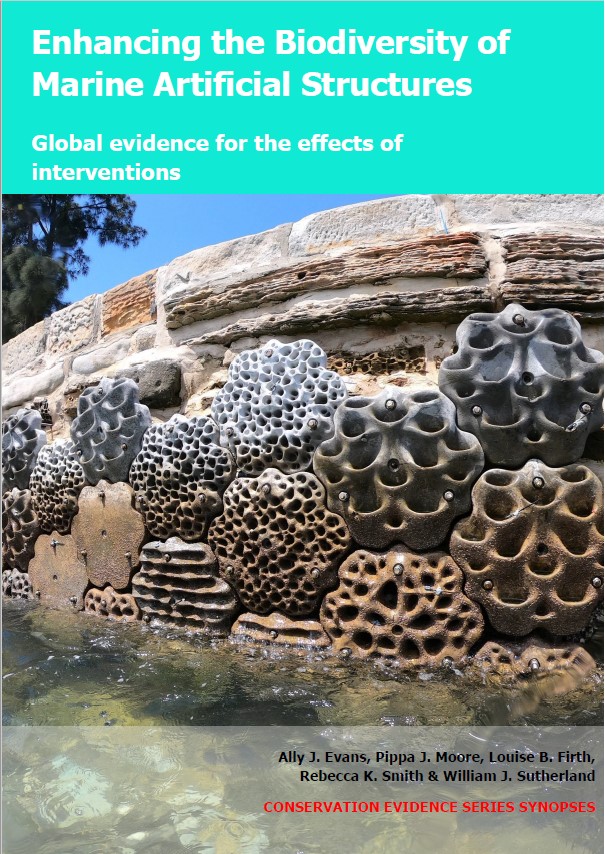Reduce the slope of intertidal artificial structures
-
Overall effectiveness category Awaiting assessment
-
Number of studies: 2
View assessment score
Hide assessment score
How is the evidence assessed?
-
Effectiveness
not assessed -
Certainty
not assessed -
Harms
not assessed
Study locations
Supporting evidence from individual studies
A replicated, controlled study (year not reported) on an intertidal seawall in Sydney Harbour estuary, Australia (Chapman & Underwood 2011) found that reducing the slope of the seawall did not increase the abundance of macroalgae, oysters Saccostrea glomerata or mobile invertebrates on seawall surfaces. Over 24 months, the abundances of macroalgae, oysters and mobile invertebrates were similar on surfaces of a new sloping seawall and on remnants of the original vertical wall that it replaced (data not reported). The slope of a seawall was reduced by replacing a vertical concrete wall with a sloping wall of boulders. This increased the extent of the intertidal area from high to low shore by 2–3 m (timing and other details of the intervention not reported). Macroalgae and invertebrates were counted on 10 surfaces (dimensions not reported) in each of four sites on the new sloping wall, and 10 on a remnant of the original vertical wall, during low tide over 24 months.
Study and other actions testedA before-and-after study in 2012–2013 on an intertidal seawall in Sydney Harbour estuary, Australia (Heath & Moody 2013) reported that reducing the slope of the seawall, along with creating rock pools on the wall, increased the macroalgae, invertebrate and fish species richness on the wall. A total of 25 macroalgae, invertebrate and fish species were recorded on the seawall and in pools after the slope was reduced and pools were created, compared with 10 species on the seawall before (data not statistically tested). It is not clear whether these effects were the direct result of reducing the slope of the seawall or creating rock pools. The slope of a sandstone boulder seawall was reduced during reconstruction in July 2012 (details not reported). Three large rock pools (area: 2 m2; depth: 300 mm; volume: 600 l) were also created on the wall. Macroalgae, invertebrates and fishes were counted during low tide on the wall before reconstruction and on the wall and in pools after reconstruction in 2013 (sampling details and month not reported).
Study and other actions tested
Where has this evidence come from?
List of journals searched by synopsis
All the journals searched for all synopses
This Action forms part of the Action Synopsis:
Biodiversity of Marine Artificial Structures
Biodiversity of Marine Artificial Structures - Published 2021
Enhancing biodiversity of marine artificial structures synopsis





)_2023.JPG)














